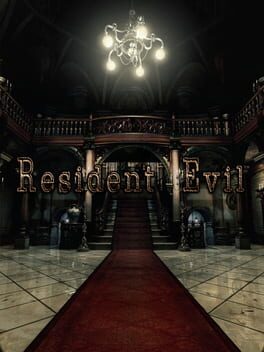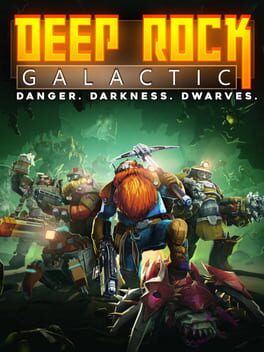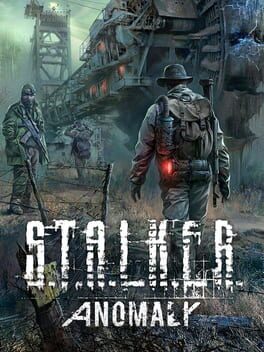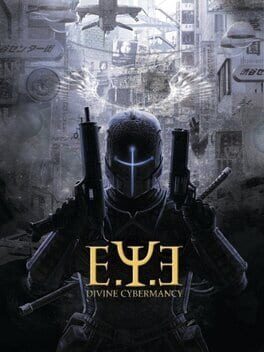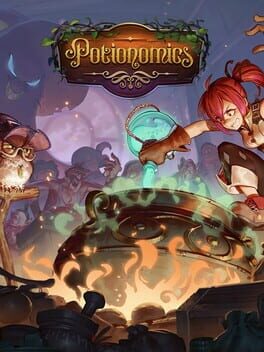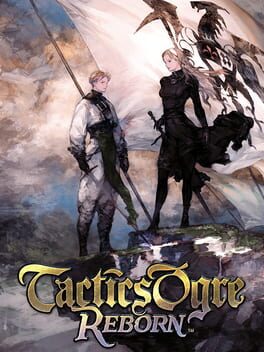mav567
35 reviews liked by mav567
Resident Evil
2014
For all the survival horror that I've dabbled with over the past few years, this is the title that made me the most cognizant of the "survival" aspect. It’s this elaborate balancing act of juggling every limited resource at your disposal: ammo for bosses and enemies, kerosene to burn necessary corpses after downing zombies to secure routes, health items as fail safes, ink ribbons to save when deemed necessary, and most importantly, inventory space to minimize backtracking with the bare minimum (knowing what you’re likely to use up as you progress so you have enough room to forage). What’s key to all of this is that it’s often worthwhile not downing zombies at all to not only conserve ammo, but also prevent the possibility of a more dangerous Crimson Head when kerosene is not only limited but requires further planning for refueling and additional inventory slots (lighter + flask). It’s punishing, but in the best way possible; damage and death become instruments of observation to properly plan out backtracking and understanding exactly what goes where. Perhaps my favorite example of this in action was abusing the various doors in a room connecting the shed corridor with a safe room; by quickly going in and out of the entrances, I could not only reset a Hunter’s awareness and spawn, but also place myself in a position where I could immediately run at the Hunter to proc an attack and slip past every time. It certainly helps, regardless, that there’s plenty of leeway for careful experimentation, thanks to all of the scattered health items about the mansion (granted, often requiring careful planning to optimize grounded herbs in rooms and keeping enough inventory space open for trips). It’s also fairly firm at setting its boundaries by telegraphing enemy placement far in advance with rattling doors/windows to signify enemy shifts, background moaning when a zombie is present in the room, and even environmental noises like crunching fallen glass to make up for the lack of vision with fixed camera angles.
That doesn’t mean, however, that the horror has been neglected. If anything, I found this game far more unsettling beyond sudden surprises. It’s not so much the fear of the unexpected, but rather, the lingering fear of waiting for the other shoe to drop while you’re expecting the unexpected. They're scripted events, sure, but they're well disguised thanks to every room often acting as its own isolated microcosm without the presence of the protagonist (not to mention that it's pretty easy to get caught up in the middle of things and forget about each individual room, which makes it all the more viscerally shocking) and there's still a feeling of player control with careful planning and routing. This fits perfectly alongside its core philosophy of risk versus reward, the existential dread of having to backtrack through several zombie infested corridors when you realize you forgot an inventory key and having to constantly and deliberately throw yourself into tight situations just to save another trip across the map. It’s what makes this such an ideal speedrunning game: not necessarily because of satisfying movement or combat, but because Resident Evil is really a game about time management. Every second wasted tromping through another passageway is time that could contribute to a zombie reviving as a Crimson Head or another second spent replaying if you’re not willing to use that extra ink ribbon. The primal fear arising from guaranteed safety as a fleeting resource lends perfectly to the need for optimization; in that sense, pressuring players into constantly checking the map to avoid confrontations and getting lost goes hand in hand with spending as little time as possible, for nothing is more terrifying than having to rewind the simulations in your head for another go.
I can’t help but feel that every detail of this game was thought down to the bone, even the original tank control scheme. That’s right, I’m actually defending tank controls for once in my life… how the turns have tabled. Dodging enemies can seem tougher, but most are conveniently placed near corners and more open areas to give you the room necessary to dodge with a backstep/quick burst to the side if you’re willing to wait and bait committal attacks. More importantly, using tank controls lets you maintain your direction and momentum while running through different camera angles of a room. With alternate controls, you most likely have to hold down the joystick to maintain velocity and upon a new camera angle, will have to quickly retap to keep the intended direction with each new angle. This becomes paramount in tighter chase sequences, where even slight moments of stagnation can lead to damage/death, as well as one timed puzzle where I had to press a button and then quickly run through several fixed angles to get into position to push a statue. In addition, I found it rather difficult to reliably walk (as opposed to running full-time) with alternate controls over tank controls, which can absolutely backfire during an end-game sequence where running for a prolonged period can trigger an explosion during nitro delivery. Therefore, the circumstances created by the environment not only are doable with tank controls, but in fact necessitate the usage of such controls.
Everything just comes together as this tightly designed package. Puzzles have fairly evident tells and can be figured out with careful observation of the surroundings while facilitating the inventory scramble that plays so heavily to the game’s survival elements. The lore never feels overbearing or excessive, and does a great job weaving in hints for crafting approaches and figuring out exactly what has to be accomplished. There’s never an explicit timer on screen outside of the final ending segment, yet the game is great at creating circumstances where you’re forced to make decisions on the fly from environmental stressors and considering the mansion not just on a per room basis, but as a sum of its parts. I genuinely don’t think I have any gripes; it was more than happy to beat me down, but understanding its parameters to scale up against its challenges was an incredibly fulfilling experience. I’d damn well say that REmake is the most focused and cohesive survival horror experience I’ve ever played. Not just a perfect remake, but perhaps a practically perfect game.
That doesn’t mean, however, that the horror has been neglected. If anything, I found this game far more unsettling beyond sudden surprises. It’s not so much the fear of the unexpected, but rather, the lingering fear of waiting for the other shoe to drop while you’re expecting the unexpected. They're scripted events, sure, but they're well disguised thanks to every room often acting as its own isolated microcosm without the presence of the protagonist (not to mention that it's pretty easy to get caught up in the middle of things and forget about each individual room, which makes it all the more viscerally shocking) and there's still a feeling of player control with careful planning and routing. This fits perfectly alongside its core philosophy of risk versus reward, the existential dread of having to backtrack through several zombie infested corridors when you realize you forgot an inventory key and having to constantly and deliberately throw yourself into tight situations just to save another trip across the map. It’s what makes this such an ideal speedrunning game: not necessarily because of satisfying movement or combat, but because Resident Evil is really a game about time management. Every second wasted tromping through another passageway is time that could contribute to a zombie reviving as a Crimson Head or another second spent replaying if you’re not willing to use that extra ink ribbon. The primal fear arising from guaranteed safety as a fleeting resource lends perfectly to the need for optimization; in that sense, pressuring players into constantly checking the map to avoid confrontations and getting lost goes hand in hand with spending as little time as possible, for nothing is more terrifying than having to rewind the simulations in your head for another go.
I can’t help but feel that every detail of this game was thought down to the bone, even the original tank control scheme. That’s right, I’m actually defending tank controls for once in my life… how the turns have tabled. Dodging enemies can seem tougher, but most are conveniently placed near corners and more open areas to give you the room necessary to dodge with a backstep/quick burst to the side if you’re willing to wait and bait committal attacks. More importantly, using tank controls lets you maintain your direction and momentum while running through different camera angles of a room. With alternate controls, you most likely have to hold down the joystick to maintain velocity and upon a new camera angle, will have to quickly retap to keep the intended direction with each new angle. This becomes paramount in tighter chase sequences, where even slight moments of stagnation can lead to damage/death, as well as one timed puzzle where I had to press a button and then quickly run through several fixed angles to get into position to push a statue. In addition, I found it rather difficult to reliably walk (as opposed to running full-time) with alternate controls over tank controls, which can absolutely backfire during an end-game sequence where running for a prolonged period can trigger an explosion during nitro delivery. Therefore, the circumstances created by the environment not only are doable with tank controls, but in fact necessitate the usage of such controls.
Everything just comes together as this tightly designed package. Puzzles have fairly evident tells and can be figured out with careful observation of the surroundings while facilitating the inventory scramble that plays so heavily to the game’s survival elements. The lore never feels overbearing or excessive, and does a great job weaving in hints for crafting approaches and figuring out exactly what has to be accomplished. There’s never an explicit timer on screen outside of the final ending segment, yet the game is great at creating circumstances where you’re forced to make decisions on the fly from environmental stressors and considering the mansion not just on a per room basis, but as a sum of its parts. I genuinely don’t think I have any gripes; it was more than happy to beat me down, but understanding its parameters to scale up against its challenges was an incredibly fulfilling experience. I’d damn well say that REmake is the most focused and cohesive survival horror experience I’ve ever played. Not just a perfect remake, but perhaps a practically perfect game.
Deep Rock Galactic
2018
Another game that seems fine enough for what it is, but where I just don't like what it is very much. I found nothing to complain about in the hour or so I spent on it, but also found nothing that hooked me and I quickly got bored with fumbling around in the dark, looking for tiny ore veins and waiting for the slow MULE to catch up, and occasionally shooting space bugs. I suppose this game was meant exclusively for co-op and that it might be more fun in that way, but I will never be finding out.
Though this is a much more noble attempt to fix the wrongs of the original devs, it still feels like I'm missing out on something here. Like am I just playing a different game from everyone else or is this really just a "follow the mission marker, find out you can't access the area, walk into an anomaly, die to a status effect you can't find in the HUD guide menu?"
Like, I enjoy difficult design if there's a purpose to it, but these games still feel kind of more like "wander around til you're bored" mixed with "the menus and items are as inaccessible as possible because uh that makes it feel deep?"
Edit: I gave it another chance and played a few more hours, all of which were spent stumbling into an anomaly hidden in a bush then reloading my save only to turn around and wander into another anomaly hidden in another bush, only to reload and to get one-shotted by a group of mutants who had wandered into the main road and snuck up behind me. It feels more often like the game doesn't want to reward exploration, which totally devalues the entire formula.
Like, I enjoy difficult design if there's a purpose to it, but these games still feel kind of more like "wander around til you're bored" mixed with "the menus and items are as inaccessible as possible because uh that makes it feel deep?"
Edit: I gave it another chance and played a few more hours, all of which were spent stumbling into an anomaly hidden in a bush then reloading my save only to turn around and wander into another anomaly hidden in another bush, only to reload and to get one-shotted by a group of mutants who had wandered into the main road and snuck up behind me. It feels more often like the game doesn't want to reward exploration, which totally devalues the entire formula.
Pulled from my full retrospective: https://www.youtube.com/watch?v=aGd-vhg0AZE
S.T.A.L.K.E.R., as I’ve come to see - and more or less appreciate it, is an impressive waste of time. Everything it boasts, from the gunplay and the realism to the immersive systems and the atmospheric open world, is all just a space to exist in for however long you see fit, until you get bored with the loop and find something else to do. It presents a wild, open world full of infinite possibilities (of things to kill, or things that will kill you), and a list of mechanics and systems that you’re seemingly not supposed to understand without trial and error and frequent quick-saves. It requires a lot of time and patience and commitment, and I feel that I gave it the amount of time it deserved before giving my thoughts a three-year-deep conclusion.
S.T.A.L.K.E.R. (the game), is little more than an aesthetic, comparative to its genre peers. It implies a deeper message, but only through its proximity to these other works, considering its title and setting. What S.T.A.L.K.E.R. seems to aim for thematically is on par with Fallout’s frontier-fantasy; isn’t it mysterious and sexy to have full reign over this barren landscape that used to be a civilization? Isn’t it fun to think about returning to zero, carrying nothing but a backpack and a gun into the wide unknown? Here we’re shown less the effects of war on society, and more a wonderland for grizzled gun-toting men, survivors who are here for the same mechanical reason as the player - they like shooting things too. Inherently, as a piece of interactive media focused more on open, immersive mechanics than a linear story, it seems more interested in being a military simulation in a “cool setting” than a rumination on why that setting exists in the first place, much less what it symbolizes. It’s a reaction to the aesthetic trend of nuclear media, the allure of tragedy and the speculation around the effects of nuclear energy, and the inevitable horror genre tropes that fill in the gaps and begin to form the fear into something shiny and profitable.
“The zone” is often as beautiful as it is ugly and static, and I found myself getting enraptured by Anomaly’s weather effects and skyboxes as often as I was disappointed with the emptiness and ugliness of an area I thought I’d take the time and resources to explore. The world is also incredibly hostile to its inhabitants, in a way that pursues “realism,” but in the process loses track of why it exists at all. The openness is presented as a space of limitless opportunity, but for what? The answer, of course, is to “be a part of the world,” which is enacted through the game’s verbs by walking for a period of time, then shooting a gun, then walking somewhere else. This openness, also, provokes a classic form of open world burnout. You’re provided with so much to do (in the form of walking, shooting, and then picking things up) that you quickly lose yourself in the loop of trying to make your numbers go up (namely encumbrance, which translates to money). With a higher number (money), you can build up equipment that allows you to go further without having to reload a save after getting one-shot - or at the very least mortally wounded by anything you come across, or anything that (thanks to the immersive world design) comes after you. This is an expensive process, both for you as a player and “you” as a stalker, and will necessitate running back and forth across several maps doing fetch quests, finding filler items to sell (that might be useful, or might just have flavor text that alludes to being useful, we’ll never tell), and trying not to get encumbered.
I’ve done my time in the zone, I’ve lived in it for a period, explored its secrets, even if I haven’t “beaten” S.T.A.L.K.E.R. in whatever form it wants to be beaten. I will probably still think about it, maybe gratuitously return to it for a few hours, try and see if there’s anything else hidden in its world. In the end, maybe this version of the zone just isn’t for me, maybe I’ll never find what I want hiding somewhere deep inside it, and maybe it wasn’t ever meant to be any deeper than “just a game.” Given S.T.A.L.K.E.R. 2’s upcoming release, the developers’ lack of reservations about NFTs, and the series’ target fanbase of hunter-killers, maybe no zone will ever live up to the ruminative fantasy I keep in my head and heart. Perhaps Chernobyl’s exclusion zone is fated, ironically, to be a constant mystical battleground, an aesthetic backdrop for yet another survival shooter game, an untouched, unruled place full of limitless violent possibilities. In the meantime, in the real world, maybe we can continue to cope with the doors that cannot be closed behind us, and hopefully learn from our mistakes and our history of violence, and prevent such a prospective future from befalling us before we inevitably get another triple-A post-nuclear frontier survival experience for the cost of $70, a thousand layoffs, a handful of crunch hospitalizations, and our dignity as artists.
S.T.A.L.K.E.R., as I’ve come to see - and more or less appreciate it, is an impressive waste of time. Everything it boasts, from the gunplay and the realism to the immersive systems and the atmospheric open world, is all just a space to exist in for however long you see fit, until you get bored with the loop and find something else to do. It presents a wild, open world full of infinite possibilities (of things to kill, or things that will kill you), and a list of mechanics and systems that you’re seemingly not supposed to understand without trial and error and frequent quick-saves. It requires a lot of time and patience and commitment, and I feel that I gave it the amount of time it deserved before giving my thoughts a three-year-deep conclusion.
S.T.A.L.K.E.R. (the game), is little more than an aesthetic, comparative to its genre peers. It implies a deeper message, but only through its proximity to these other works, considering its title and setting. What S.T.A.L.K.E.R. seems to aim for thematically is on par with Fallout’s frontier-fantasy; isn’t it mysterious and sexy to have full reign over this barren landscape that used to be a civilization? Isn’t it fun to think about returning to zero, carrying nothing but a backpack and a gun into the wide unknown? Here we’re shown less the effects of war on society, and more a wonderland for grizzled gun-toting men, survivors who are here for the same mechanical reason as the player - they like shooting things too. Inherently, as a piece of interactive media focused more on open, immersive mechanics than a linear story, it seems more interested in being a military simulation in a “cool setting” than a rumination on why that setting exists in the first place, much less what it symbolizes. It’s a reaction to the aesthetic trend of nuclear media, the allure of tragedy and the speculation around the effects of nuclear energy, and the inevitable horror genre tropes that fill in the gaps and begin to form the fear into something shiny and profitable.
“The zone” is often as beautiful as it is ugly and static, and I found myself getting enraptured by Anomaly’s weather effects and skyboxes as often as I was disappointed with the emptiness and ugliness of an area I thought I’d take the time and resources to explore. The world is also incredibly hostile to its inhabitants, in a way that pursues “realism,” but in the process loses track of why it exists at all. The openness is presented as a space of limitless opportunity, but for what? The answer, of course, is to “be a part of the world,” which is enacted through the game’s verbs by walking for a period of time, then shooting a gun, then walking somewhere else. This openness, also, provokes a classic form of open world burnout. You’re provided with so much to do (in the form of walking, shooting, and then picking things up) that you quickly lose yourself in the loop of trying to make your numbers go up (namely encumbrance, which translates to money). With a higher number (money), you can build up equipment that allows you to go further without having to reload a save after getting one-shot - or at the very least mortally wounded by anything you come across, or anything that (thanks to the immersive world design) comes after you. This is an expensive process, both for you as a player and “you” as a stalker, and will necessitate running back and forth across several maps doing fetch quests, finding filler items to sell (that might be useful, or might just have flavor text that alludes to being useful, we’ll never tell), and trying not to get encumbered.
I’ve done my time in the zone, I’ve lived in it for a period, explored its secrets, even if I haven’t “beaten” S.T.A.L.K.E.R. in whatever form it wants to be beaten. I will probably still think about it, maybe gratuitously return to it for a few hours, try and see if there’s anything else hidden in its world. In the end, maybe this version of the zone just isn’t for me, maybe I’ll never find what I want hiding somewhere deep inside it, and maybe it wasn’t ever meant to be any deeper than “just a game.” Given S.T.A.L.K.E.R. 2’s upcoming release, the developers’ lack of reservations about NFTs, and the series’ target fanbase of hunter-killers, maybe no zone will ever live up to the ruminative fantasy I keep in my head and heart. Perhaps Chernobyl’s exclusion zone is fated, ironically, to be a constant mystical battleground, an aesthetic backdrop for yet another survival shooter game, an untouched, unruled place full of limitless violent possibilities. In the meantime, in the real world, maybe we can continue to cope with the doors that cannot be closed behind us, and hopefully learn from our mistakes and our history of violence, and prevent such a prospective future from befalling us before we inevitably get another triple-A post-nuclear frontier survival experience for the cost of $70, a thousand layoffs, a handful of crunch hospitalizations, and our dignity as artists.
Everspace
2017
I have a lot of problems with Everspace, a lot of which born from having played numerous roguelikes (including a lot of better ones). It's a game that has some good ideas that in another game might work great but are bogged down by a ton of counterintuitive ideas.
Take the credits system for example. During runs, you can earn credits which can be used to purchase upgrades for all future runs. Your performance is directly tied to how many credits you'll earn each run which creates a solid reward system for better positioning, aim, and decision making. However, these upgrades are often just ticking up individual stats by some small amount that only come together once you've increased those stats a ton of times. They also may as well be required to progress, leading to a lot of what feels like wasted time early on.
Another big example is the crafting system, which lets you use resources you find from scavenging on that run to craft weapons and other passive or active "devices". This sounds great on paper since RNG won't break your run quite so often. To counteract this though, weapons from random drops and enemies are objectively better in almost every scenario. This means if you want to use your favorite weapons, you're essentially shooting yourself in the leg.
These aren't even the only examples either. There's also the longer runs which help give a strong sense of progression while making the early game of each run a chore, and an amnesiac story that slowly opens up overtime, but doesn't feel memorable due to how sporadically it's told and how mediocre it is on its own.
It's frustrating since there's a good game at the core of Everspace. But with how bogged down it is by its own systems, I can't bring myself to keep playing.
Take the credits system for example. During runs, you can earn credits which can be used to purchase upgrades for all future runs. Your performance is directly tied to how many credits you'll earn each run which creates a solid reward system for better positioning, aim, and decision making. However, these upgrades are often just ticking up individual stats by some small amount that only come together once you've increased those stats a ton of times. They also may as well be required to progress, leading to a lot of what feels like wasted time early on.
Another big example is the crafting system, which lets you use resources you find from scavenging on that run to craft weapons and other passive or active "devices". This sounds great on paper since RNG won't break your run quite so often. To counteract this though, weapons from random drops and enemies are objectively better in almost every scenario. This means if you want to use your favorite weapons, you're essentially shooting yourself in the leg.
These aren't even the only examples either. There's also the longer runs which help give a strong sense of progression while making the early game of each run a chore, and an amnesiac story that slowly opens up overtime, but doesn't feel memorable due to how sporadically it's told and how mediocre it is on its own.
It's frustrating since there's a good game at the core of Everspace. But with how bogged down it is by its own systems, I can't bring myself to keep playing.
Everspace
2017
Potionomics
2022
There is so much good in this game. The visuals are beautiful, the character designs are phenomenally expressive, the music is really nice and always fits the mood.
This game combines business management, deckbuilding, and persona style social link mechanics, and they mostly work to enhance each other. All of the characters are really endearing, and each one adds a fun new layer to running your business.
The haggling mechanic is a lot of fun too. It plays out as a deckbuilder and you get new cards from bonding with your friends. This is the game that got me into deckbuilders and I can't thank it enough for that.
That being said, there are a few major issues. For one, this game is way too freaking long. It took me 30 hours to beat, and that was 10-15 to many. The gameplay is great, but you will be sick of it by the time the credits roll. It was not meant to last this long. Also, the potion making mechanic isn't the best either.
Don't get me wrong, it's fun, but it's easily the least interesting part of the game, and it's the one you'll be doing the most because every other mechanic like the social bonding and haggling can be skipped, but you need to make the potions manually.
If you want my advice, play up to the third tournemant. After that, the game doesn't get bad, but you're gonna get tired of it.
This game combines business management, deckbuilding, and persona style social link mechanics, and they mostly work to enhance each other. All of the characters are really endearing, and each one adds a fun new layer to running your business.
The haggling mechanic is a lot of fun too. It plays out as a deckbuilder and you get new cards from bonding with your friends. This is the game that got me into deckbuilders and I can't thank it enough for that.
That being said, there are a few major issues. For one, this game is way too freaking long. It took me 30 hours to beat, and that was 10-15 to many. The gameplay is great, but you will be sick of it by the time the credits roll. It was not meant to last this long. Also, the potion making mechanic isn't the best either.
Don't get me wrong, it's fun, but it's easily the least interesting part of the game, and it's the one you'll be doing the most because every other mechanic like the social bonding and haggling can be skipped, but you need to make the potions manually.
If you want my advice, play up to the third tournemant. After that, the game doesn't get bad, but you're gonna get tired of it.
Tactics Ogre: Reborn
2022
Chapter I completed.
Tactics Ogre Reborn is a unique tactical RPG with an emphasis on complicated political situations and consequential choices. The music is largely forgettable, and the visuals are compromised by a smudgey upscaling filter. That said, both underscore the gritty war adventure tone. The story is well constructed, although the delivery is frequently a word salad of new people, places, and factions.
The leveling and class systems are a bit different from the standard fare, with class change items in limited supply but open recruitment and a massive number of classes, races, and creatures (eventually) available for your use. Unfortunately all this customization doesn't keep battles from becoming a real slog after a a few hours. The first few turns of every encounter are just two armies crawling toward each other, and strategies mostly just boil down to ganging up on specific enemy units.
I'm sure it's a fine game if you can handle a very slow pace, but I need treats more often than this. Maybe an option to speed up battles more would have helped me push through to the additional variety that opens up down the line.
Tactics Ogre Reborn is a unique tactical RPG with an emphasis on complicated political situations and consequential choices. The music is largely forgettable, and the visuals are compromised by a smudgey upscaling filter. That said, both underscore the gritty war adventure tone. The story is well constructed, although the delivery is frequently a word salad of new people, places, and factions.
The leveling and class systems are a bit different from the standard fare, with class change items in limited supply but open recruitment and a massive number of classes, races, and creatures (eventually) available for your use. Unfortunately all this customization doesn't keep battles from becoming a real slog after a a few hours. The first few turns of every encounter are just two armies crawling toward each other, and strategies mostly just boil down to ganging up on specific enemy units.
I'm sure it's a fine game if you can handle a very slow pace, but I need treats more often than this. Maybe an option to speed up battles more would have helped me push through to the additional variety that opens up down the line.
